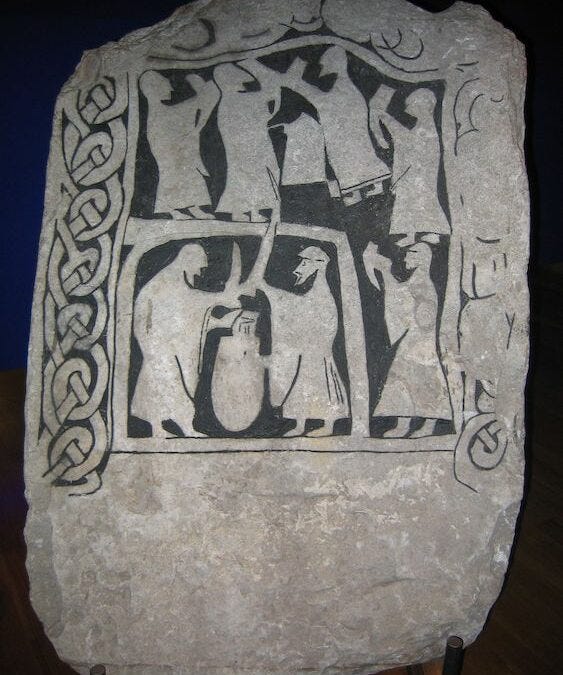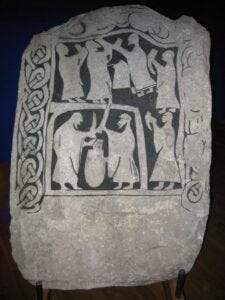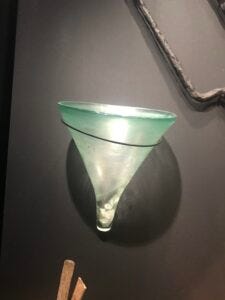How Often did the Vikings Drink from Drinking Horns?
How Often did the Vikings Drink from Drinking Horns? I explore this question below.
Modern portrayals of the Vikings seem to be obsessed with horns, particularly in regards to those worn on the head (as part of the helmet) and those used for drinking. While the former has been proven false time and again – the Vikings did not wear horns – the second use, drinking from a horn, is a different story. A quick search on the internet might lead someone to believe the Vikings had a pseudo-monopoly on horns as drinkware, and that it was their preferred way to drink. While the use of drinking horns is not in question, the prevalence of such use is. Fictional portrayals seem to put drinking horns in the hands of every Scandinavian of the day. How Often did the Vikings Drink from Drinking Horns? I explore this question below.
What did the Vikings use to drink?
Drinking horns have been found scattered across the Viking Age archaeological record, from grave finds to pictorial evidence. No evidence is more compelling than the depiction of a drinking party, painted on a stone in Gotland in the 8th century, and which depicts every attendee of the party holding a drinking horn.
A drinking scene on an image stone from Gotland, Swedish Museum of National Antiquities, Stockholm.
Does this mean all Vikings drank exclusively from drinking horns? No. We must remember that the artist was likely paid by a chieftain who was much concerned about his enduring reputation, and therefore he would have asked the artist to make it look like the best party ever.
The reality is that the Vikings would have used whatever was available to them to drink their ale. The most primitive vessels may have been small cones made of rolled birch or rowan bark. Bowls and goblets would have been the most commonly used vessels to drink, made from whatever material the owner of it could afford. Some wealthy chieftains could afford silver chalices from England and France, or even more expensive glass beakers (pictured below), though these would have been extremely expensive and rare.
Glass beaker from the Carolingian Empire found in Sweden.
What place did drinking horns have in Viking Age Scandinavian society?
Drinking horns, historians believe, may have been a luxury item used almost exclusively for special occasions and rituals. Horns were difficult to procure, mainly since animals were expensive to raise in Viking Age Scandinavia. Hence, they likely held tremendous value, and only a wealthy chieftain or his family could have afforded one.
This does not mean less wealthy folk did not also enjoy the occasional drink from a horn. Viking Age Scandinavian culture demanded largesse from chieftains and kings. Leaders recruited and retained the loyalty of their warriors by showering them with gifts. A polished, decorated drinking horn would have made any warrior of the day extremely happy, and more importantly, loyal.
Were drinking horns invented by the Vikings?
No. Drinking horns were nothing new by the time the first Vikings set sail for Lindisfarne. In fact, drinking horns have a long history dating back to antiquity. The Greek historian Xenophon described drinking horns as central to Thracian culture, as an example. Julius Caesar, famed emperor of Rome, observed the use of drinking horns by the Gauls, a confederacy of Celtic tribes that lived in roughly the area of modern France (the term Gaul is somewhat controversial to those specialized on the subject, but I’ll avoid that can of worms here). He described their use in his book, De Bello Gallico:
“The Gaulish horns in size, shape, and kind are very different from those of our cattle. They are much sought-after, their rim fitted with silver, and they are used at great feasts as drinking vessels.”
In no uncertain terms, the use of drinking horns far predates the Viking Age, but Viking Age Scandinavians, and by extension those who roved abroad, did drink from horns. It may not, however, have been a cultural norm to drink from them outside of special occasions.





